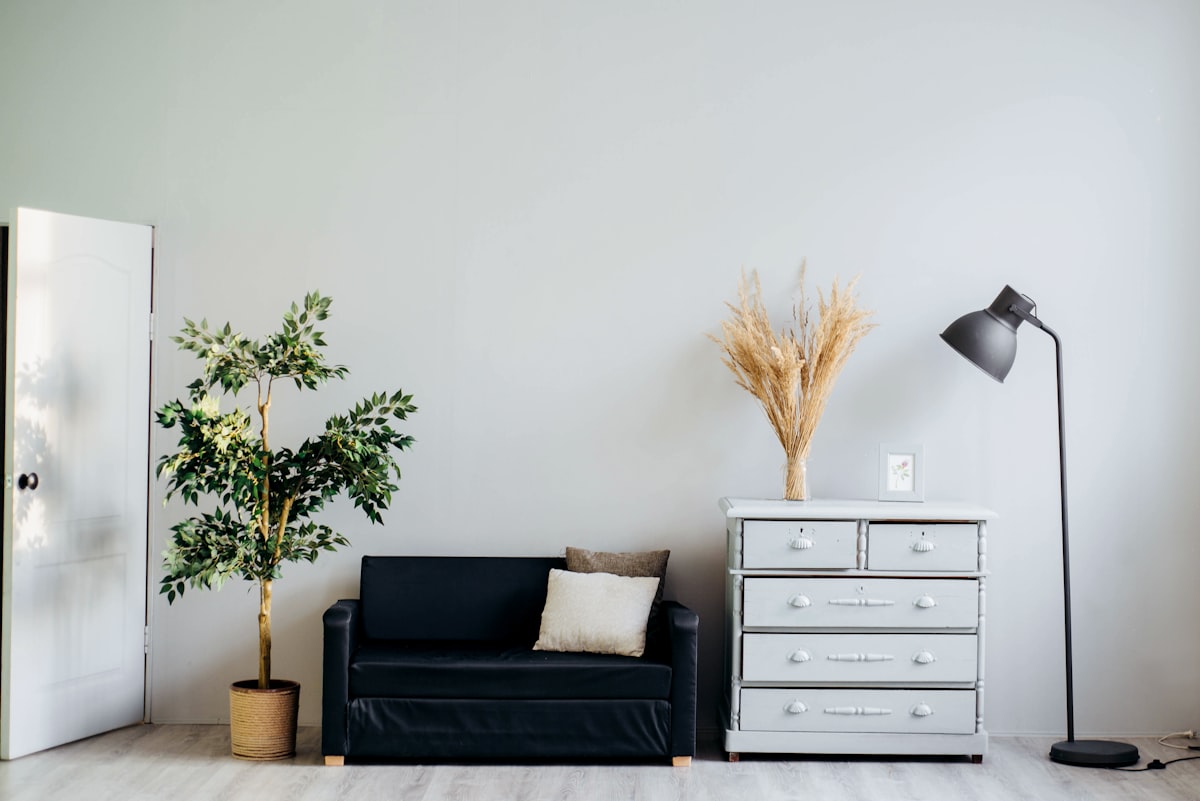The bedroom is the only room in your house that asks nothing of you. The kitchen demands cooking; the living room demands entertaining; the home office demands productivity. But the bedroom? It only asks that you let go.
Yet, for many, it becomes a repository of deferred decisions—a graveyard of laundry piles, mismatched furniture, and lighting that feels more “interrogation room” than “boutique hotel.”
I have spent the last month analyzing interior design psychology, consulting 2025 trend reports from top design firms, and diving deep into the mechanics of what makes a “luxury” space feel luxurious. The conclusion? A refresh isn’t about buying a new mattress. It is about sensory curation.
“Your bedroom environment is the last thing you see before you sleep and the first thing you see when you wake. It frames your entire day.” — Dr. A. Huxley, Environmental Psychologist
Phase 1: The “Quiet Luxury” Bed Foundation
The bed is the visual anchor of the room. If it looks messy, the room feels chaotic. If it looks structured, the room feels serene.
1. The “Triple Sheet” Technique
Stop struggling with duvet covers. High-end hotels use a technique called “triple sheeting” to achieve that crisp, heavy feel without the lumpy comforter look.
- Layer 1: A fitted sheet over the mattress.
- Layer 2: A flat sheet, face down (so the soft side hits your skin).
- Layer 3: A lightweight blanket or duvet insert.
- Layer 4: Another flat sheet on top, textured or patterned.
2. Upgrade to “Euro Shams” for Height
Standard pillows often look flat and sad against a headboard. The secret to a styled bed is verticality. Introduce Euro Shams (26×26 inch square pillows). Place two (or three for a King bed) against the headboard. They hide the sleeping pillows and add a wall of texture.
3. The Linen vs. Percale Debate
Texture is an emotional trigger. If your room feels sterile, switch to Belgian Linen. The natural wrinkling implies relaxation and softness. If your room feels hot or cluttered, switch to Percale Cotton. Its crisp, matte finish signals order and coolness.
💡 Pro Tip: The “Burrito” Method
If you stick with a duvet cover, learn the “Burrito Method” (rolling the duvet and cover together) to change it in under 60 seconds. It eliminates the “ghost in a sack” struggle.
Phase 2: Lighting Psychology
Lighting is the number one failure point in DIY design. Most bedrooms are over-lit with the wrong color temperature.
4. The 2700K Rule
Go to your bedroom right now and check your lightbulbs. If they say “Daylight” or “5000K,” throw them away. Blue-spectrum light suppresses melatonin. You need 2700K (Warm White) bulbs. This specific temperature mimics the golden hour of sunset.
5. Asymmetrical Sconces
Free up your nightstand real estate. Wall-mounted sconces are a massive trend for 2025. They don’t have to be hardwired; many modern options are “plug-in” with stylish cords.
6. The “Toe Kick” Glow
Nothing ruins a sleepy state like turning on a main light to go to the bathroom. Install a motion-sensor LED strip under your bed frame. It provides a soft, amber glow that guides you without waking your retinas.

Phase 3: The “Double Drenching” Color Trend
7. Double Drenching
A massive trend identified by Little Greene and Farrow & Ball for 2025. Instead of white trim, paint your baseboards, door frames, and ceiling in a color related to your walls. If your walls are Sage Green, paint the trim a Dark Forest Green.
8. The Fifth Wall (Ceiling)
You stare at your ceiling more than any other wall. Painting it a soft contrasting color (like a pale blue or a warm beige) creates a “lid” on the room, enhancing the feeling of being protected.
🎨 2025 Color Forecast
- Terracotta: Grounding and earthy.
- Deep Chocolate: The new black; warm and sophisticated.
- Misted Blue: A classic sleep-inducer.
Phase 4: Biophilic & Organic Design
10. The Snake Plant Sentinel
Most plants release oxygen by day and CO2 by night. The Sansevieria (Snake Plant) is one of the few that continues to release oxygen at night. It is the functional decor piece your lungs need.

Phase 5: Layout & “The Unseen”
12. The “Power Position”
In Feng Shui, this is non-negotiable. Your bed should be placed so you can see the door, but you are not directly in line with it. This taps into an evolutionary need for safety.
13. Aggressive Cord Management
Visible wires are “visual noise.” Your brain processes them as clutter. Use simple velcro ties or a cable management box to hide the chaos behind your nightstand.
Phase 6: The Finishing Touches
15. Scentscaping
Design is multi-sensory. Use a ceramic diffuser with Cedarwood or Lavender. Avoid artificial “Fresh Linen” plug-ins, which can smell chemically sharp.
16. The Rug Placement Rule
A common mistake is a rug floating in the middle of the room. The rug should start about 1/3 of the way down from the head of the bed and extend at least 18 inches beyond the foot of the bed.
17. Texture Mixing
If your walls are smooth and your sheets are smooth, the room feels flat. Introduce Bouclé or Velvet via a throw pillow. This “tactile friction” makes the room feel expensive.
18. Art Scale
Stop hanging tiny pictures over a king-sized bed. You need one large piece (at least 50% the width of the bed) or a horizontal gallery set. Scale creates confidence.
| Category | The Fix | Cost |
|---|---|---|
| Bedding | Triple Sheeting & Euro Shams | $$ |
| Lighting | 2700K Bulbs & Toe Kick LEDs | $ |
| Walls | Double Drenching Paint | $$ |
| Biophilic | Snake Plant & Raw Wood | $ |
| Layout | Rug Placement & Cord Hiding | $ |
Your bedroom doesn’t need a renovation. It needs intention. By adjusting the light temperature, adding layers to your bed, and removing visual noise, you aren’t just decorating; you are engineering a better night’s sleep.


















